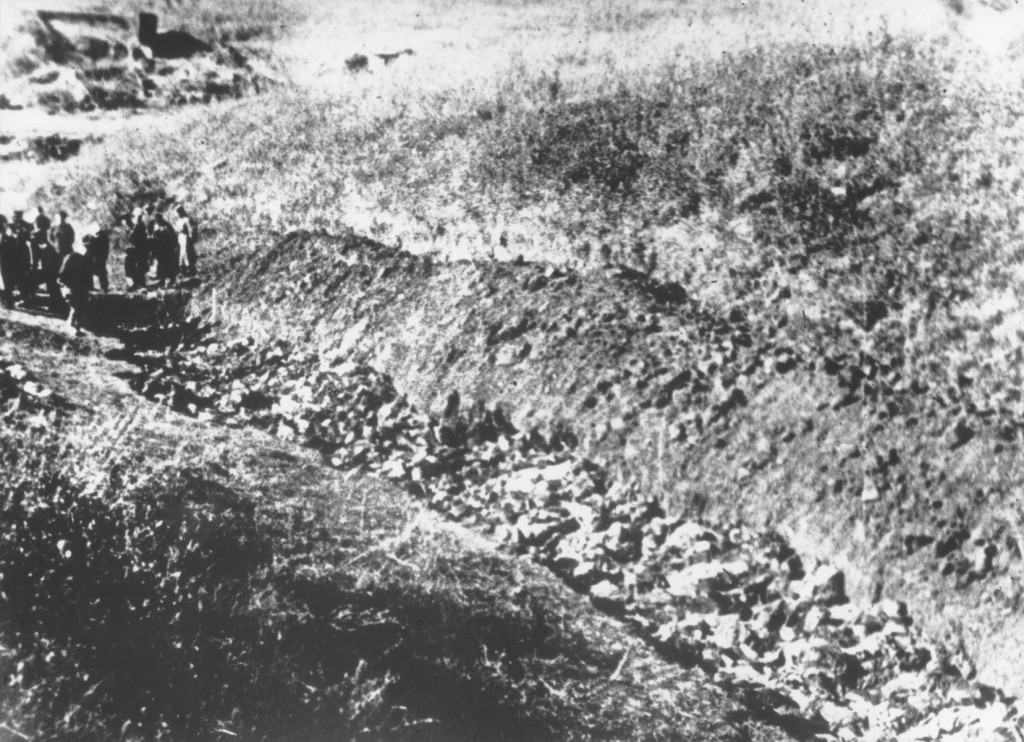
Germans Kill Thousands of Jews in Mass Shooting Outside Kiev
In late September 1941, SS and German police units and their auxiliaries perpetrated one of the largest massacres of World War II. It took place at a ravine called Babyn Yar (Babi Yar) just outside the Ukrainian capital city of Kyiv (Kiev).
View newspaper articlesIn the summer of 1941, following Germany's attack on the Soviet Union, Germans and their allies and collaborators began mass shootings of Jewish men, women, and children in territory seized from Soviet forces. These murders were part of the “Final Solution to the Jewish Question,” the mass murder of Europe’s Jews.
Generally, the large-scale massacres are better known. This is because of the high number of victims, and the fact that the large-scale mass shootings were perpetrated close to bigger towns or cities.
Among the largest mass shootings conducted soon after German forces entered the Soviet Union were the massacres at Kamenets-Podolsk (Kamianets-Podils’kyi) and Babi Yar (Babyn Yar). On August 26-28, 1941, German SS and police units, supported by Ukranian auxiliaries, murdered 23,600 Jews at Kamenets-Podolsk in occupied Ukraine. Then, on September 29-30, 1941, SS and German police units and their auxiliaries murdered a large portion of the Jewish population who remained in Kiev (Kyiv) at Babi Yar. At the time, Babi Yar was a ravine located just outside the city. According to Einsatzgruppen reports, 33,771 Jews were massacred during this two-day period. After the massacre, the ravine at Babi Yar became a killing site where Germans murdered tens of thousands of people, mostly non-Jews, between 1941 and 1943. It is estimated that some 100,000 people were murdered at Babi Yar.
As with Babi Yar, the Germans established killing sites near other cities where they repeatedly carried out massacres. Tens of thousands of people, most of them Jews, were murdered at each of these killing sites. The most infamous of these sites were Fort IX in Kovno (Kaunas), the Rumbula and Bikernieki Forests in Riga, Ponary near Vilna (Vilnius), and Maly Trostenets near Minsk. At these killing sites, Germans and local collaborators murdered tens of thousands of local Jews. They also deported tens of thousands of German, Austrian, and Czech Jews from central Europe to these killing sites in 1941 and 1942.
As many as 2 million Jews -- almost one third of the Holocaust victims -- were murdered in mass shootings.
Learn More about this Historical Event
- Mass Shootings of Jews During the Holocaust (Holocaust Encyclopedia)
- Mass Shootings at Babyn Yar (Babi Yar) (Holocaust Encyclopedia)
- Kamenets-Podolsk (Holocaust Encyclopedia)
- Operation “Harvest Festival” (Holocaust Encyclopedia)
- Einsatzgruppen: An Overview (Holocaust Encyclopedia)
- “Final Solution”: Overview (Holocaust Encyclopedia)
Search tips
These dates and keywords are associated with this historical event.